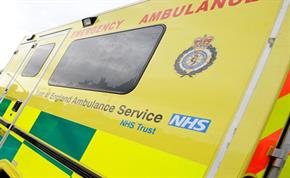
What is clinical accountability, and what does it mean for you?
Accountability in healthcare is vital for patient safety.
Essentially, being ‘accountable’ means you’re answerable to yourself and others for your actions. As a paramedic you have a duty of care and a legal liability to your patients; you’re accountable for them and the care you provide, as you’re also accountable for any decisions to delegate tasks and duties to other colleagues when it comes to patient care.
So what do you need to consider when you’re transferring care to someone else, such as when you don’t travel with the patient because you’re on an RRV, or aren’t in the patient-care compartment because you’re driving? And what’s your accountability when working with a colleague of another clinical grade, whether it be an emergency medical technician (EMT), associate ambulance practitioner (AAP), emergency care assistant (ECA), intermediate ambulance practitioner (IAP), or student?
Whilst it might seem obvious, it’s important to reiterate here that as a paramedic you need to practice in accordance with your standards of proficiency, conduct, performance and ethics from the Health and Care Professions Council (HCPC). One size doesn’t fit all either – you need to give consideration to the specific situation you’re in, and the learning of the individual you’re working with.
The term ‘professional accountability’ relies on the individual clinician:
Although each situation will appear different, there are common points that you can refer back to and consider when you’re assessing your professional accountability. We use the term ‘dynamic risk assessment’ when we’re caring for patients, and this can also be applied to accountability decisions. It’s also helpful to think about risk scores, in terms of consequence (what is the actual or potential effect?), and likelihood (how often or likely is it to occur?).
These questions may help you in considering professional accountability:
Remember, as a registered professional the expectation is that accountability rests with you.
These principles can be used by everyone, whether working with a paramedic or another colleague. But for all of us, communication is key; if you aren’t sure of something or what the situation requires, it’s important to ask.
If you are an EMT or AAP working with a colleague of the same grade, or are on a student paramedic/ECA/IAP crew, your accountability will be in line with your job description, training and competency. For ECAs and IAPs especially, it is important that you are aware of any needs of the patient, including monitoring requirements, and use the red flag approach to ask for help where appropriate. Don’t accept the care of a patient that goes beyond your scope of practice and has not been assessed beforehand. It’s ok to challenge when it comes to the safety of patients.
In other words, the expectation is that you will always do the best you are able and are trained for. That includes raising concerns or discussing factors affecting patient care, regardless of who the other clinicians are; this actually applies to all of us - clinical or otherwise.
If you have any questions on clinical accountability, please speak to your line manager or get in touch with the area clinical lead team at clinical.leads@eastamb.nhs.uk. And remember, the Clinical Advice Line is always on hand to offer guidance and support if you’re unsure of anything whilst on scene – 07753 950843.
Published 23rd March, 2017